Every weekend, Jing Jai Market comes alive with a sense of vibrancy that is hard to put into words. Located just north of Chiang Mai’s Old City, the market is more than a place to buy or sell—it is an immersive experience where food, crafts, colors, and community come together in a dazzling expression of local life. Unlike some of the city’s busier night markets, Jing Jai feels approachable yet buzzing, a space where every corner reveals something unexpected. The sound of conversations and laughter mixes with the sizzling of street food on griddles, while the bright hues of produce, flowers, and handmade goods create a living canvas that stretches across the open-air grounds.
From the very moment you enter, the market feels like a carefully woven tapestry: locals carrying baskets of fresh vegetables, artisans displaying handmade creations, and curious travelers discovering tastes and textures they’ve never encountered before. It is a celebration of community that thrives on authenticity, blending tradition with the creativity of modern Chiang Mai.
The abundance of organic produce
At the heart of Jing Jai Market is its commitment to organic and sustainable produce.
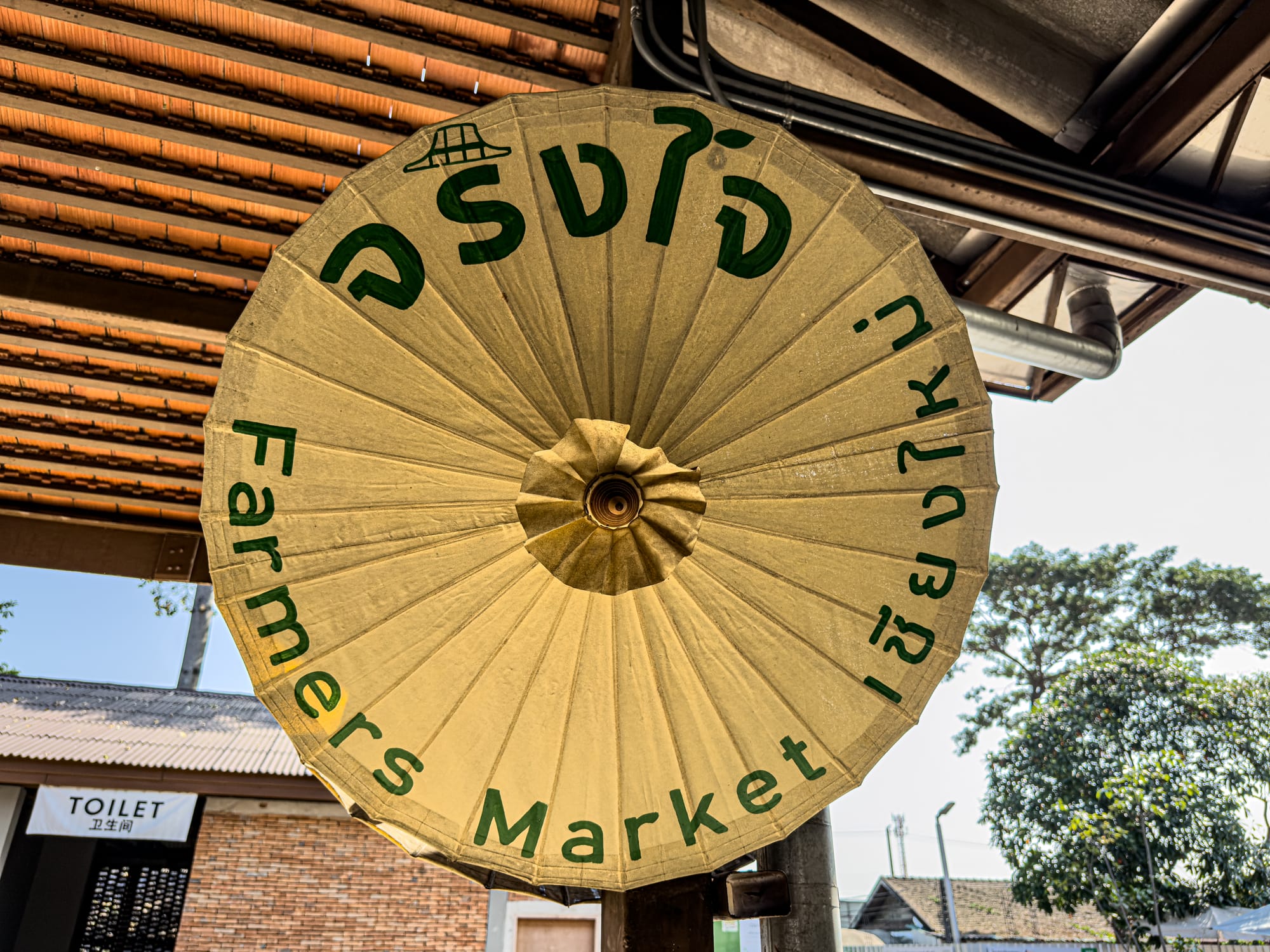
The stalls are bursting with freshly harvested vegetables, herbs, and fruits, often grown by small-scale farmers from the surrounding countryside. It is impossible not to be drawn in by the displays: bright green cucumbers piled neatly into woven baskets, leafy bunches of kale still damp with morning dew, and fragrant bundles of lemongrass tied carefully with string. The sheer variety is staggering, with each vendor taking pride in presenting their goods in ways that reflect both practicality and artistry.
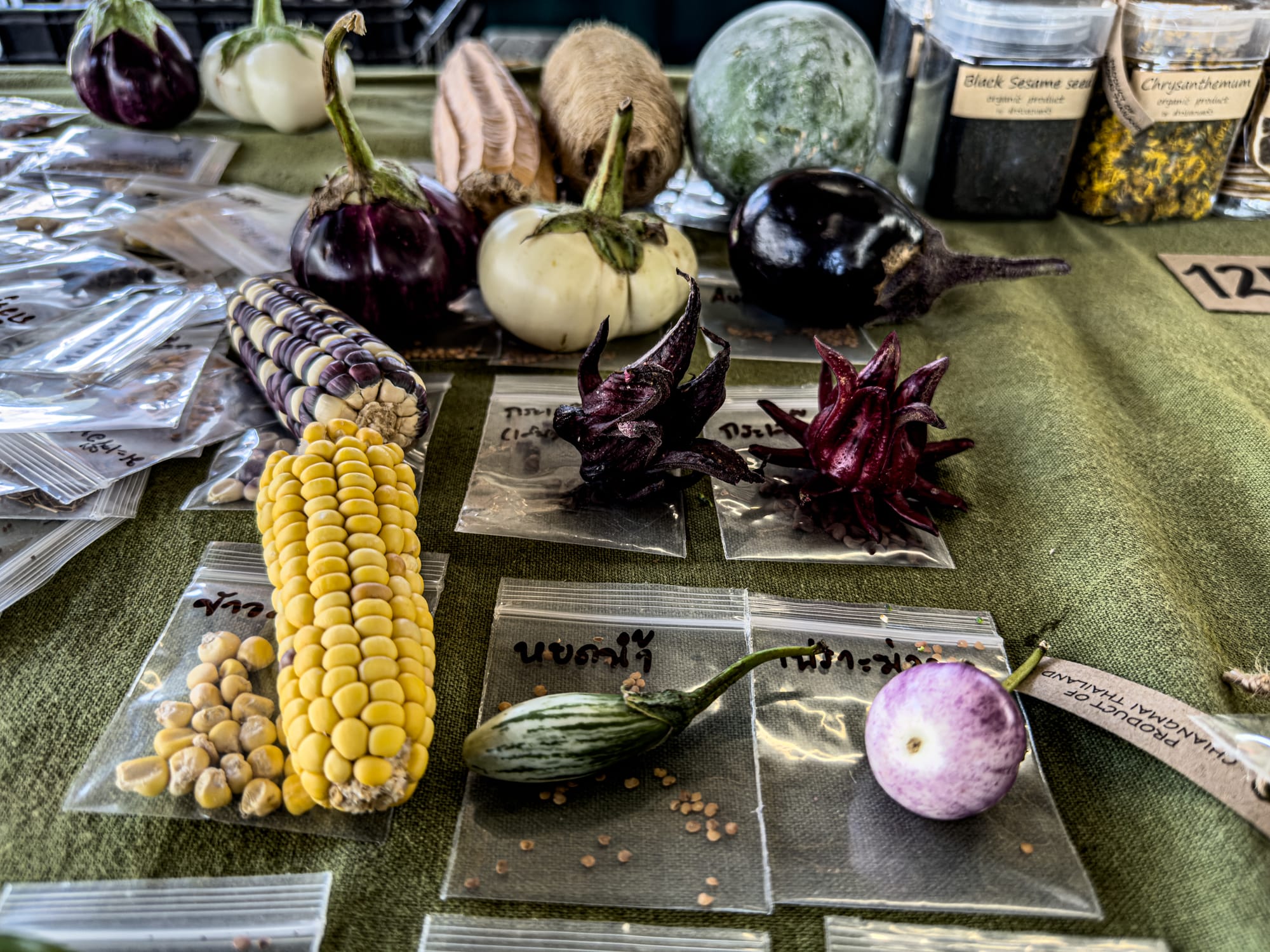
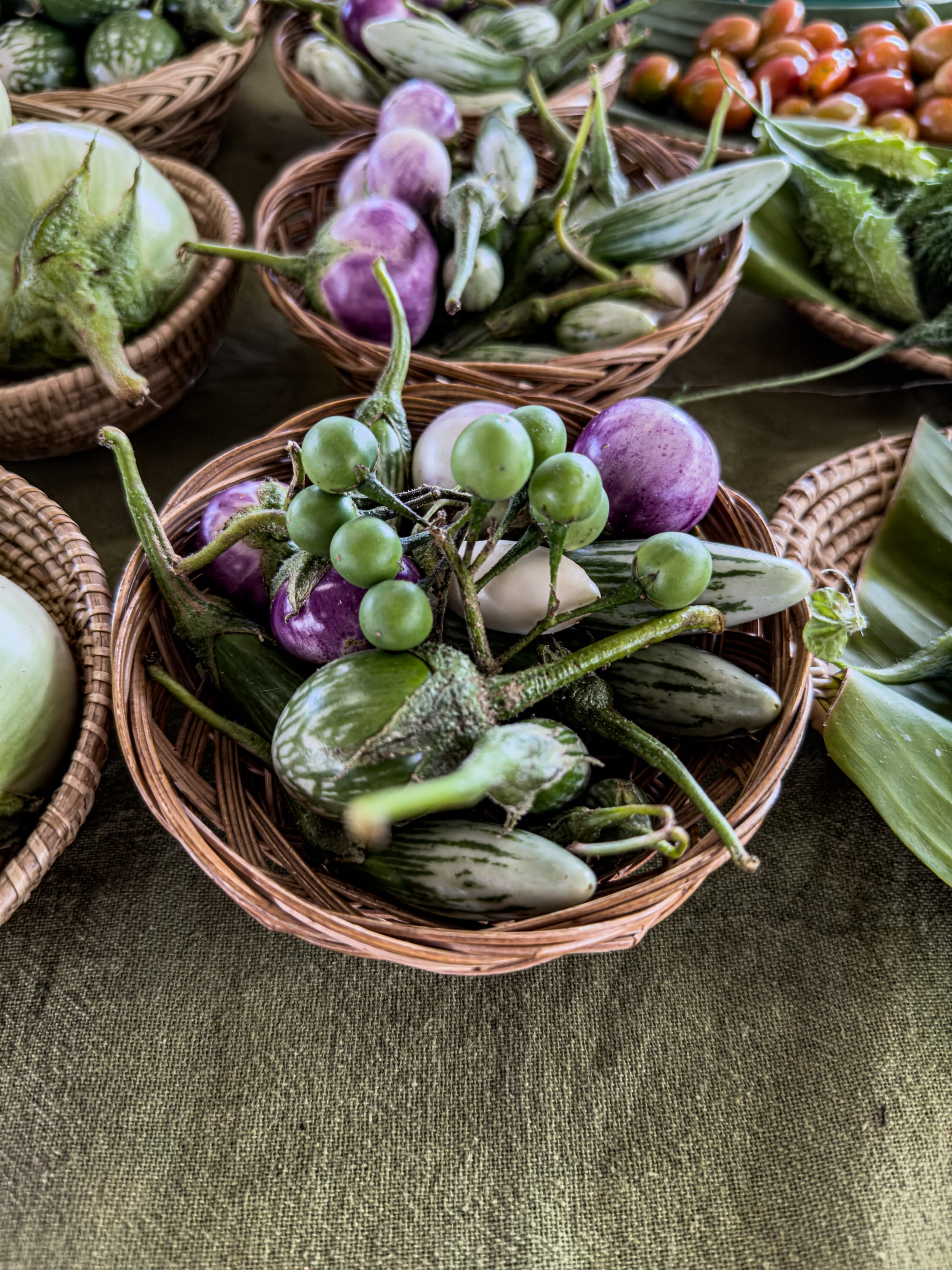
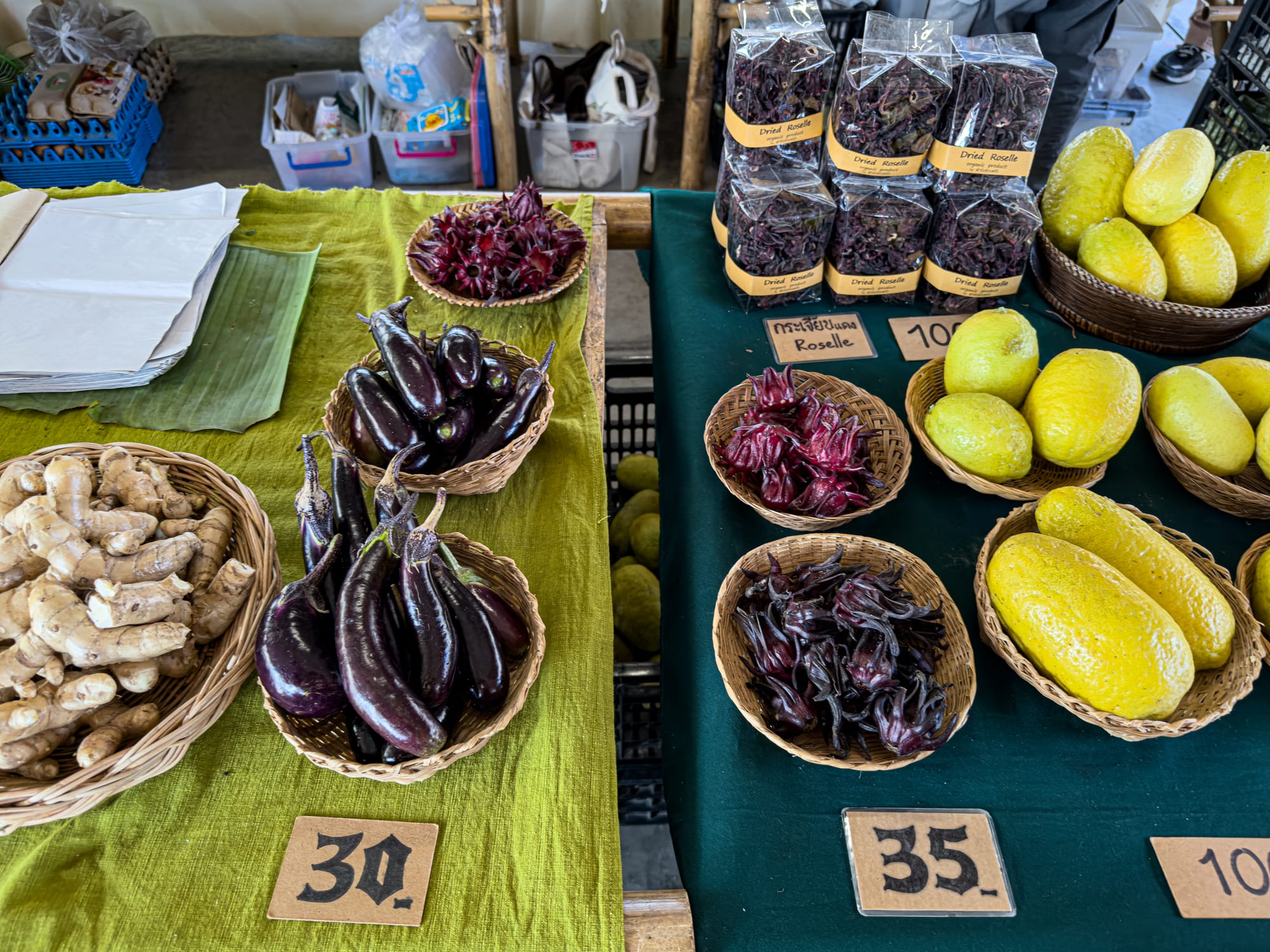
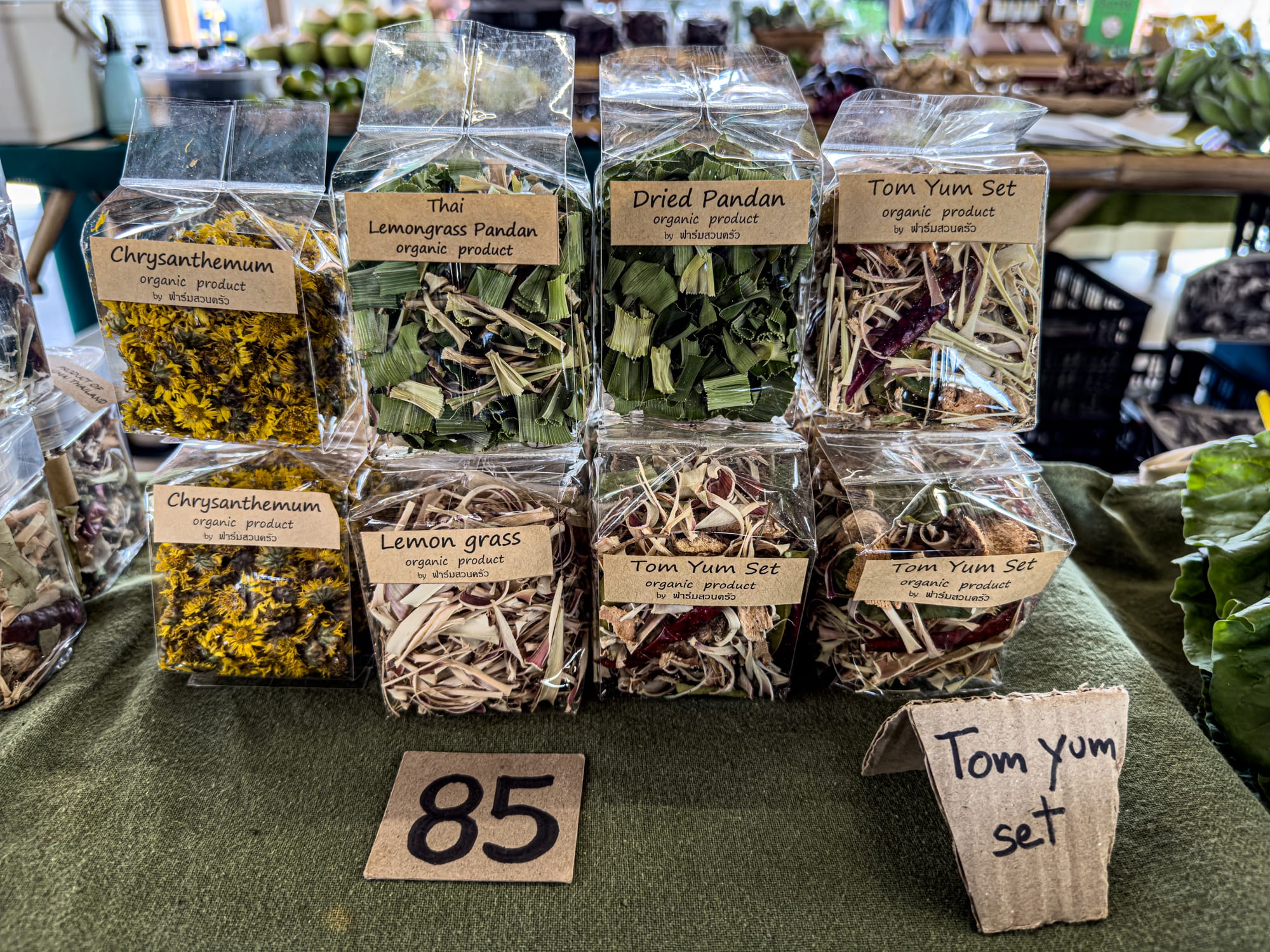
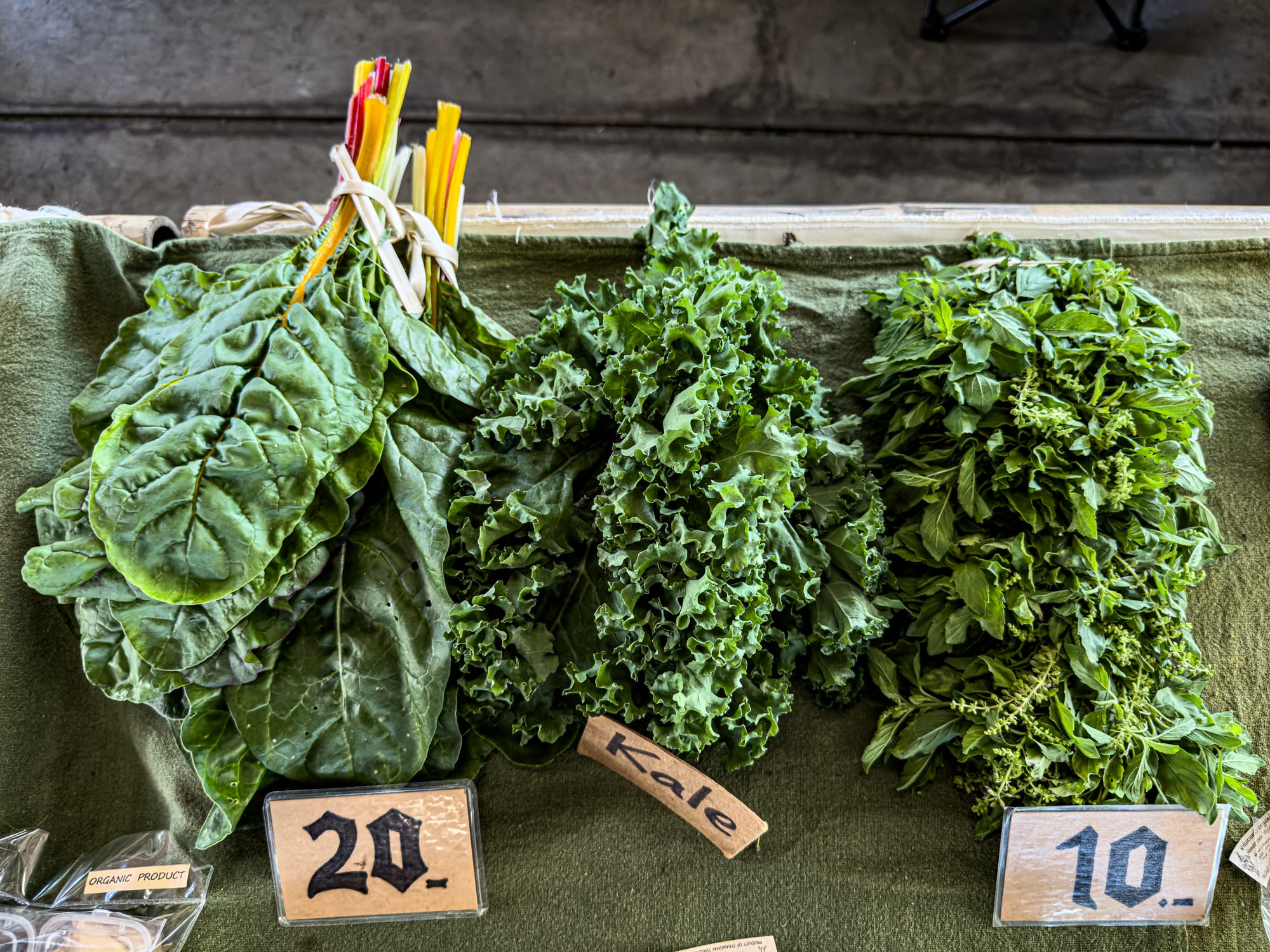
Fresh organic produce on display at Jing Jai Market in Chiang Mai
There is something profoundly grounding about the experience of browsing these stalls. The earthy scent of just-pulled carrots and beets hangs in the air, mingling with the sharper fragrance of herbs like basil and coriander.
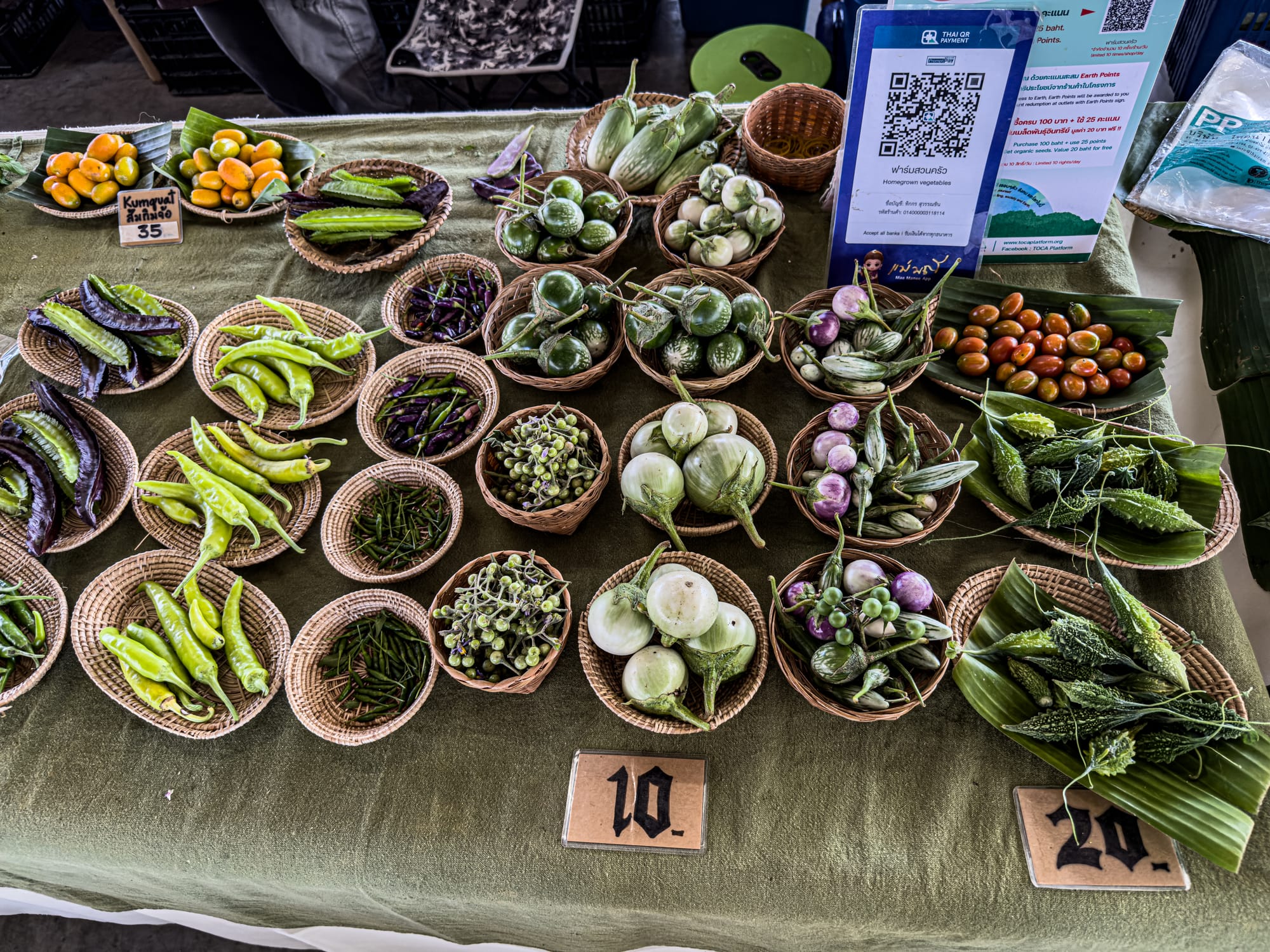
Vendors offer samples of unusual fruits—tangy pomelos, juicy dragon fruits, and bananas of a dozen different varieties, some tiny and sweet, others starchy and filling.
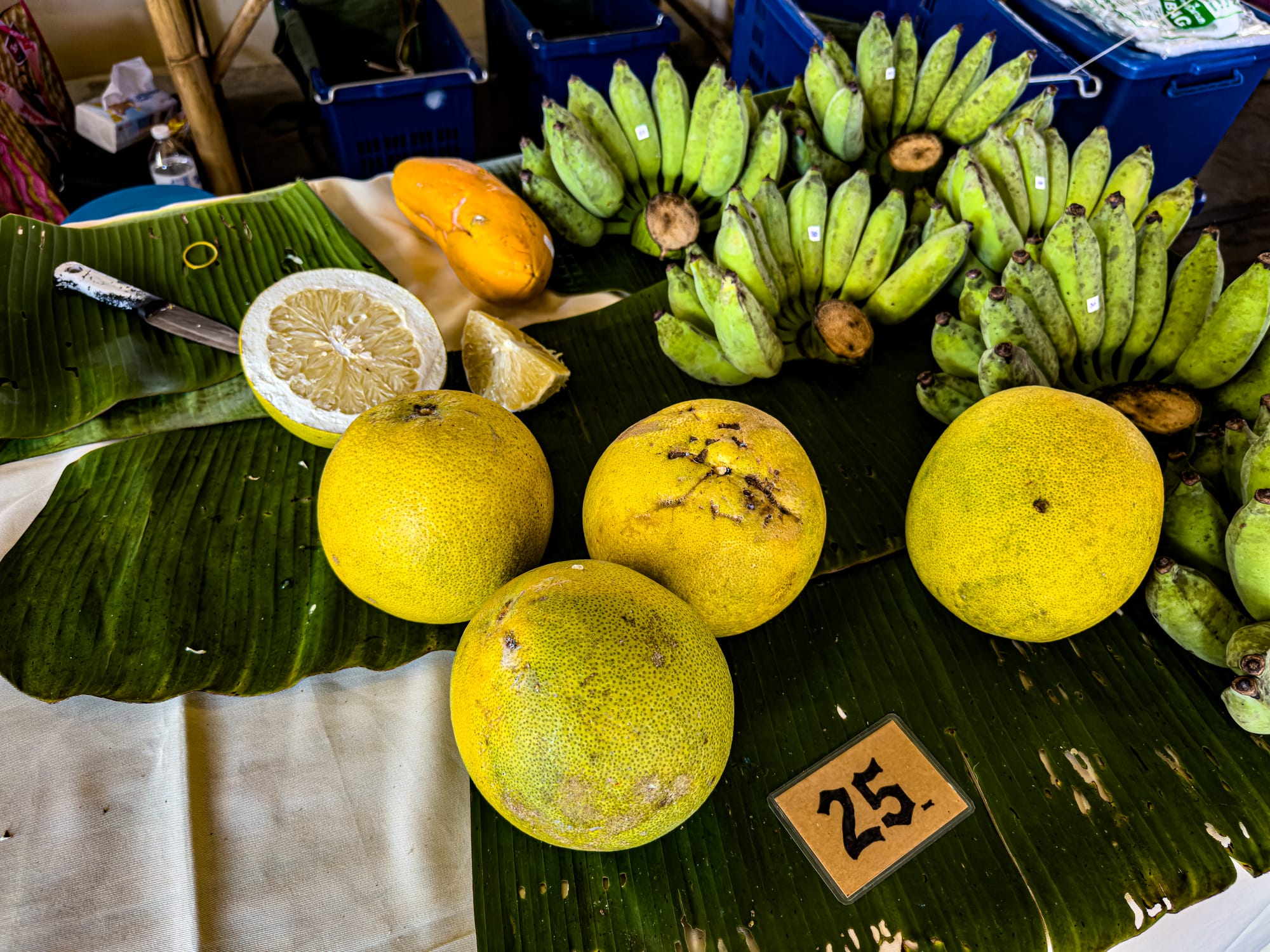
Each transaction feels personal, not rushed, with time to pause and exchange a few words about the season’s harvest. It is this intimacy between grower and buyer that makes Jing Jai stand apart, emphasizing the link between food, land, and community.
Street food delights
While the produce stalls ground the market in its agricultural roots, the street food section delivers pure indulgence. The air here is thick with the aroma of spices and sizzling oil, pulling you toward steaming pots and sizzling pans where vendors prepare everything from classic northern Thai curries to inventive snacks. Walking through this part of the market is like wandering through a sensory maze: one stall tempts you with golden fried banana fritters, another serves steaming bowls of khao soi, rich with coconut milk and topped with crunchy noodles. There are clay grills stacked with skewers of marinated meats, their smoky perfume carried through the air, and woks bubbling with stir-fried vegetables in glossy sauces.
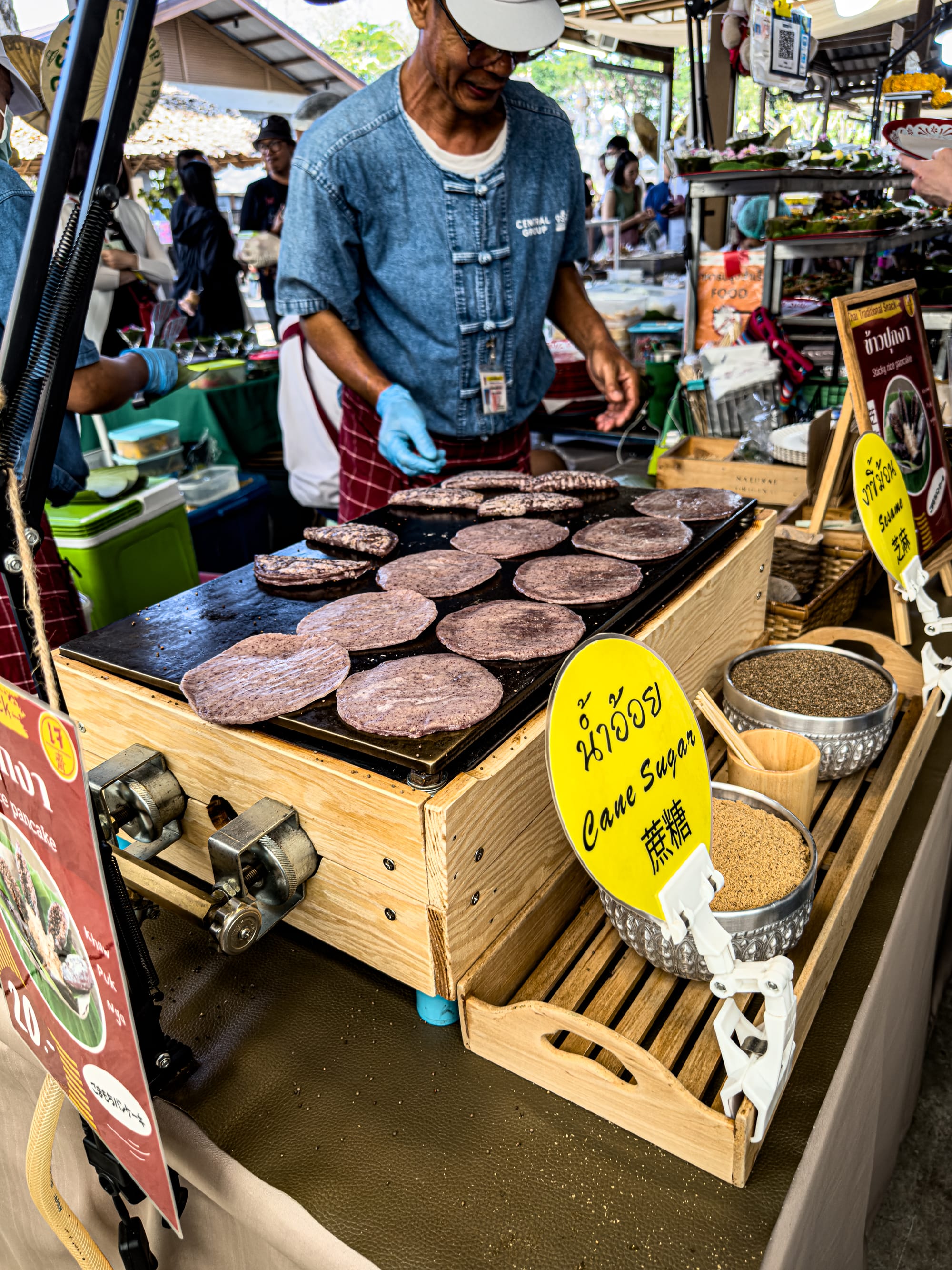
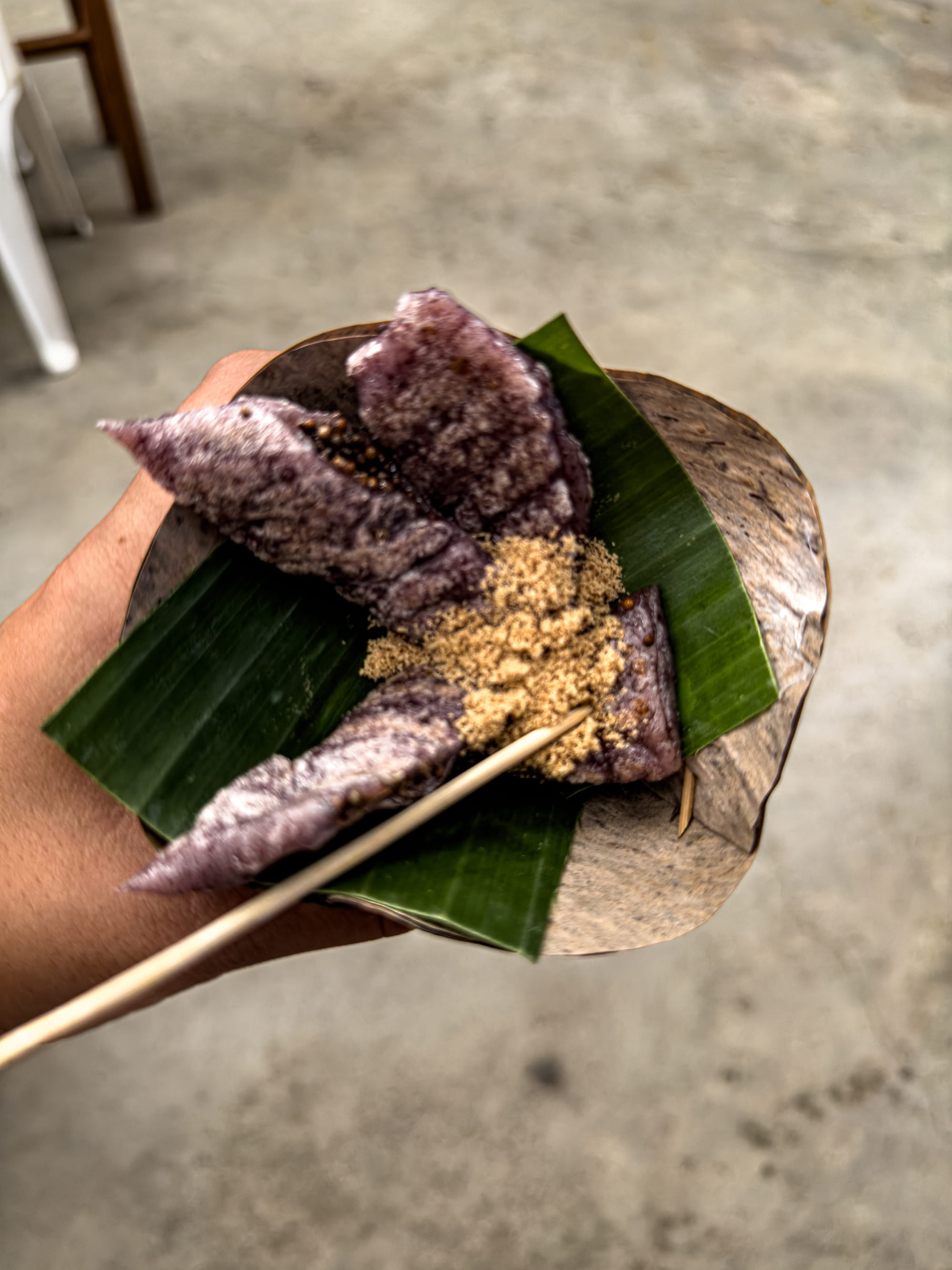
A vendor at Jing Jai Market grills traditional purple rice pancakes, served hot with a sprinkle of cane sugar
The experience is as visual as it is gustatory. Brightly painted signs announce the dishes of the day, often scrawled in chalk or hand-painted on pieces of reclaimed wood. Plates are decorated with banana leaves, bowls brimming with curry are garnished with sprigs of fresh coriander, and fried treats are wrapped in recycled paper for easy snacking.
The floral salad: a feast for the senses
One of the true highlights of Jing Jai Market is the floral salad, a creation that feels more like a piece of ephemeral art than a dish meant to be eaten. Watching it come together is a performance in itself.
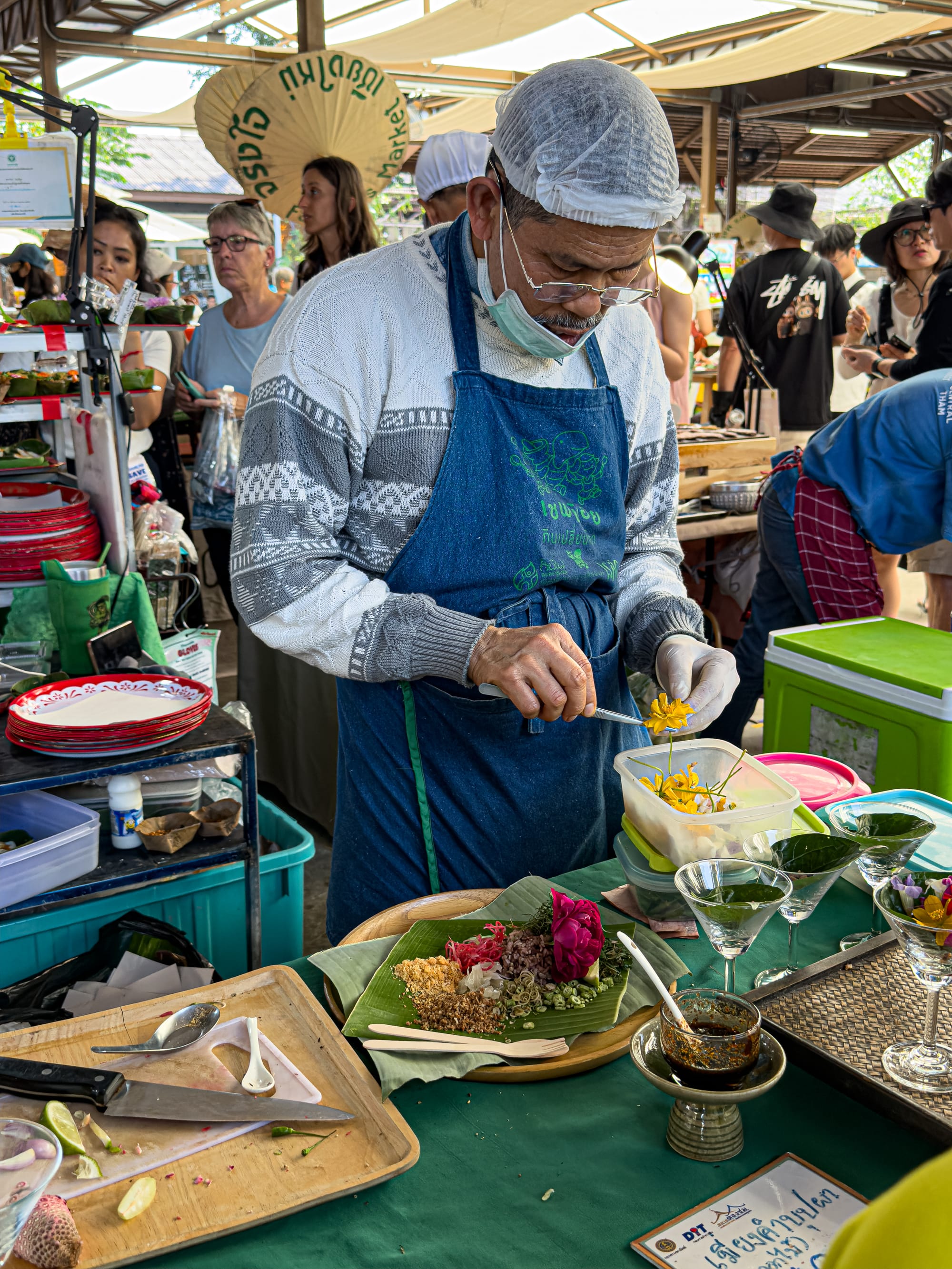
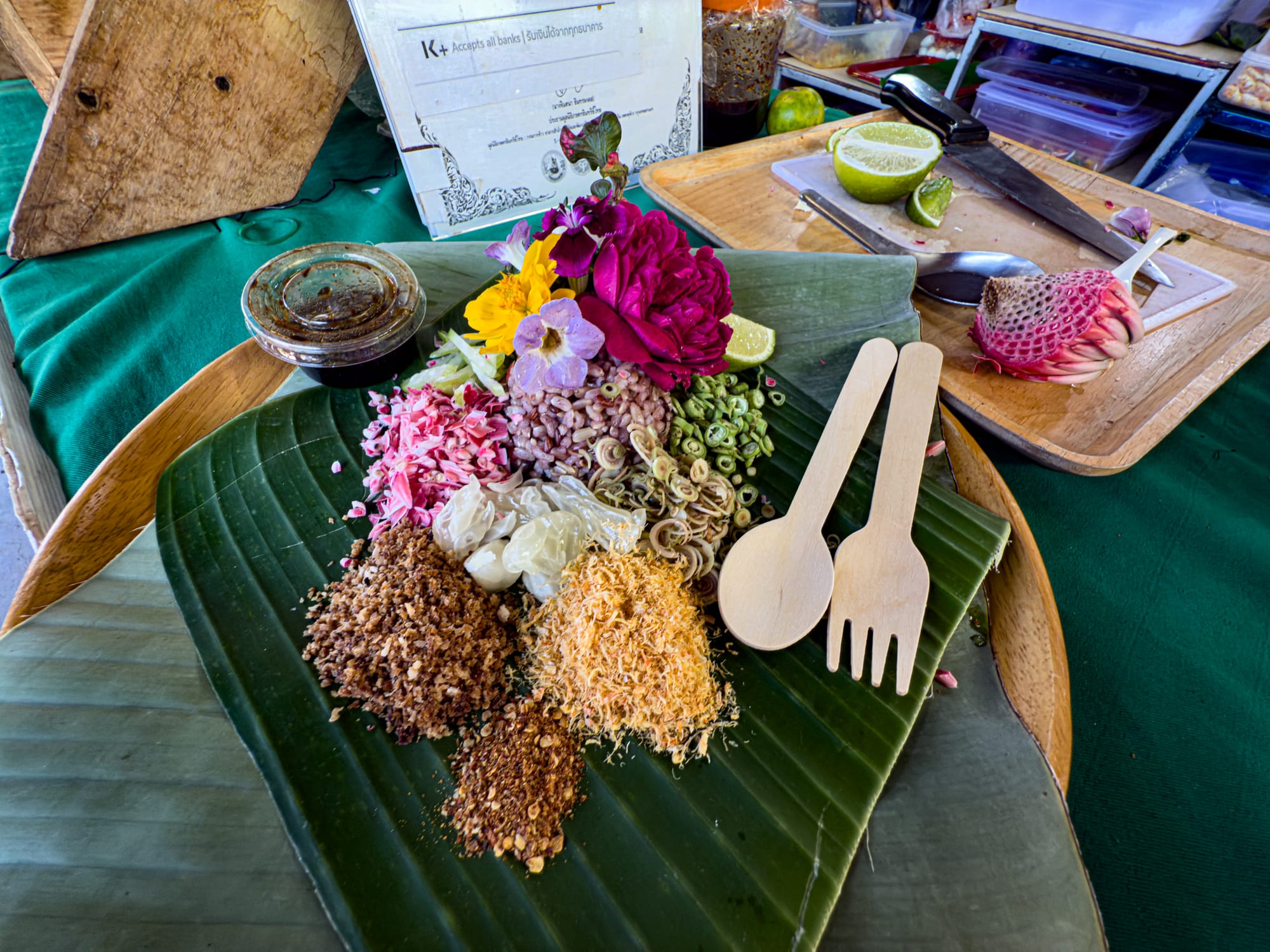
A vendor at Jing Jai Market prepares a colorful edible flower salad, arranging petals, herbs, and citrus on a banana leaf
The vendor, with a practiced hand, arranges delicate petals, fragrant herbs, and finely chopped vegetables on a large green banana leaf. Bright yellow marigolds, deep purple orchids, fiery red hibiscus, and tender white jasmine blossoms are layered together with crisp lettuce, cucumber slices, and shavings of carrot. A drizzle of tangy tamarind dressing glistens across the top, uniting the flavors into a vibrant whole.
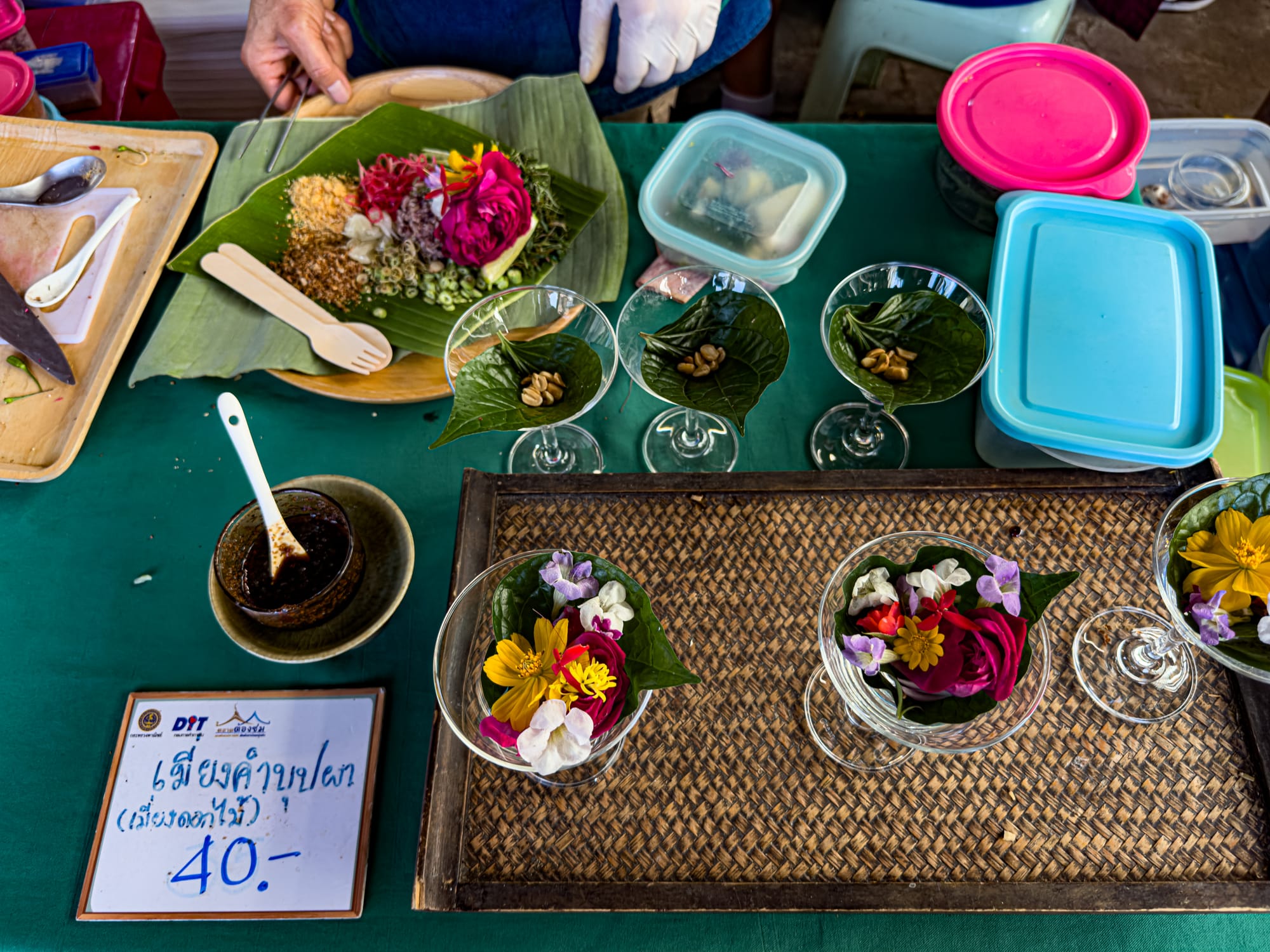
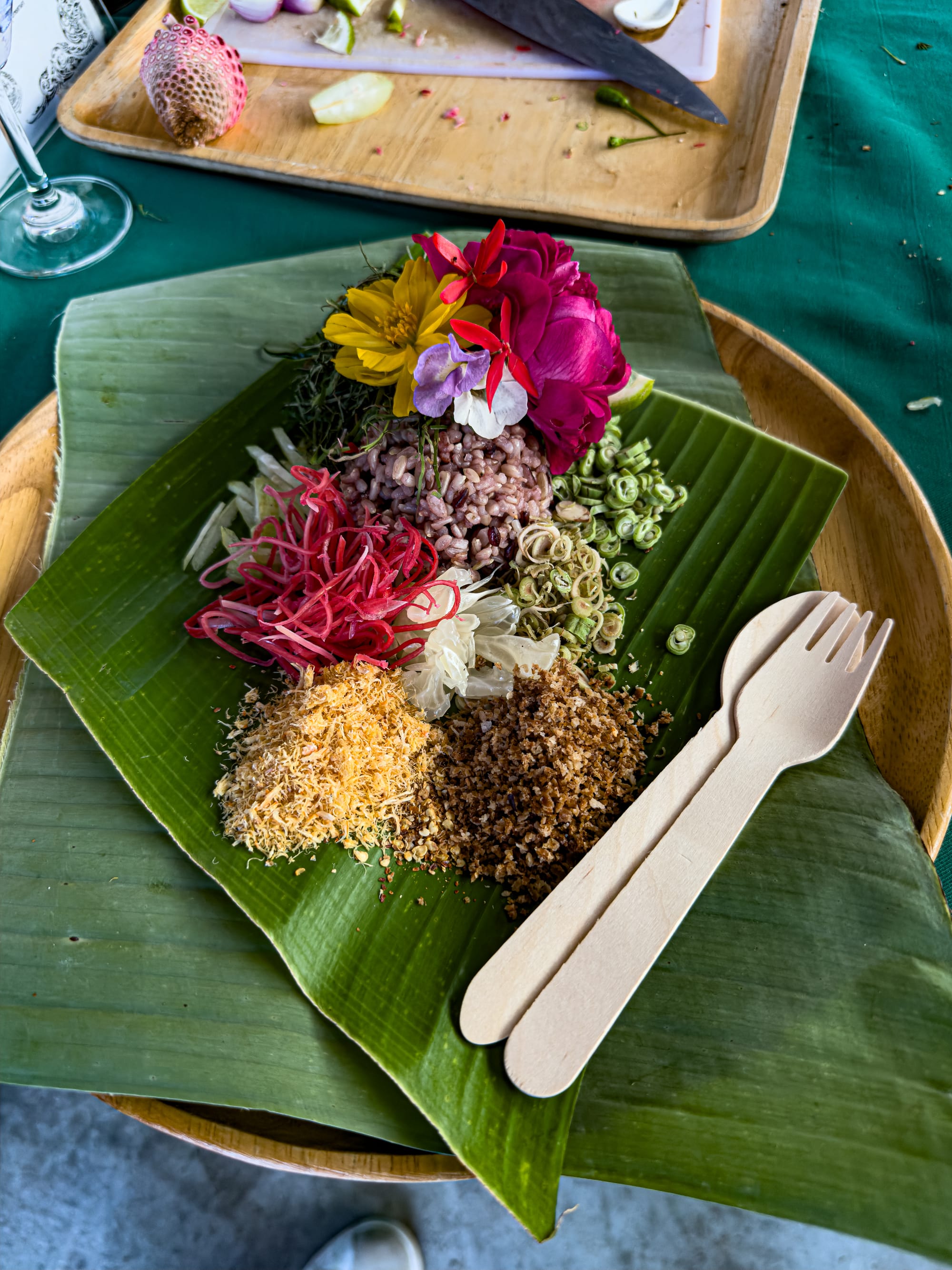
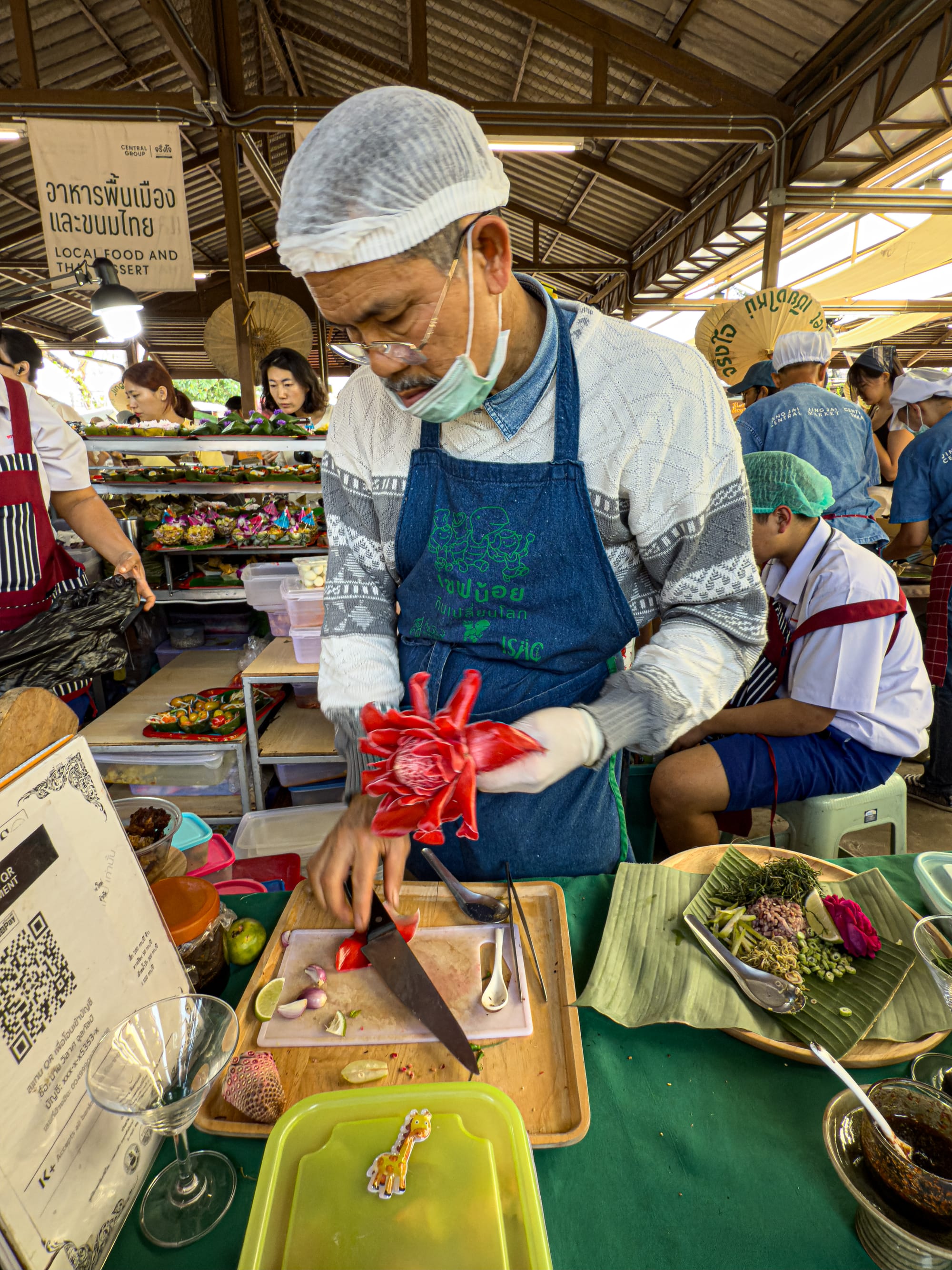
A vendor at Jing Jai Market prepares a stunning floral salad
The result is breathtaking—a plate that bursts with color, fragrance, and texture. Taking a bite feels almost ceremonial. The petals are surprisingly tender, with flavors ranging from peppery to sweet, while the herbs bring freshness and the dressing ties everything together with a balanced tang. It is a reminder that food can be more than sustenance; it can be an exploration of beauty and transience, a reminder of how deeply connected cuisine and nature truly are.
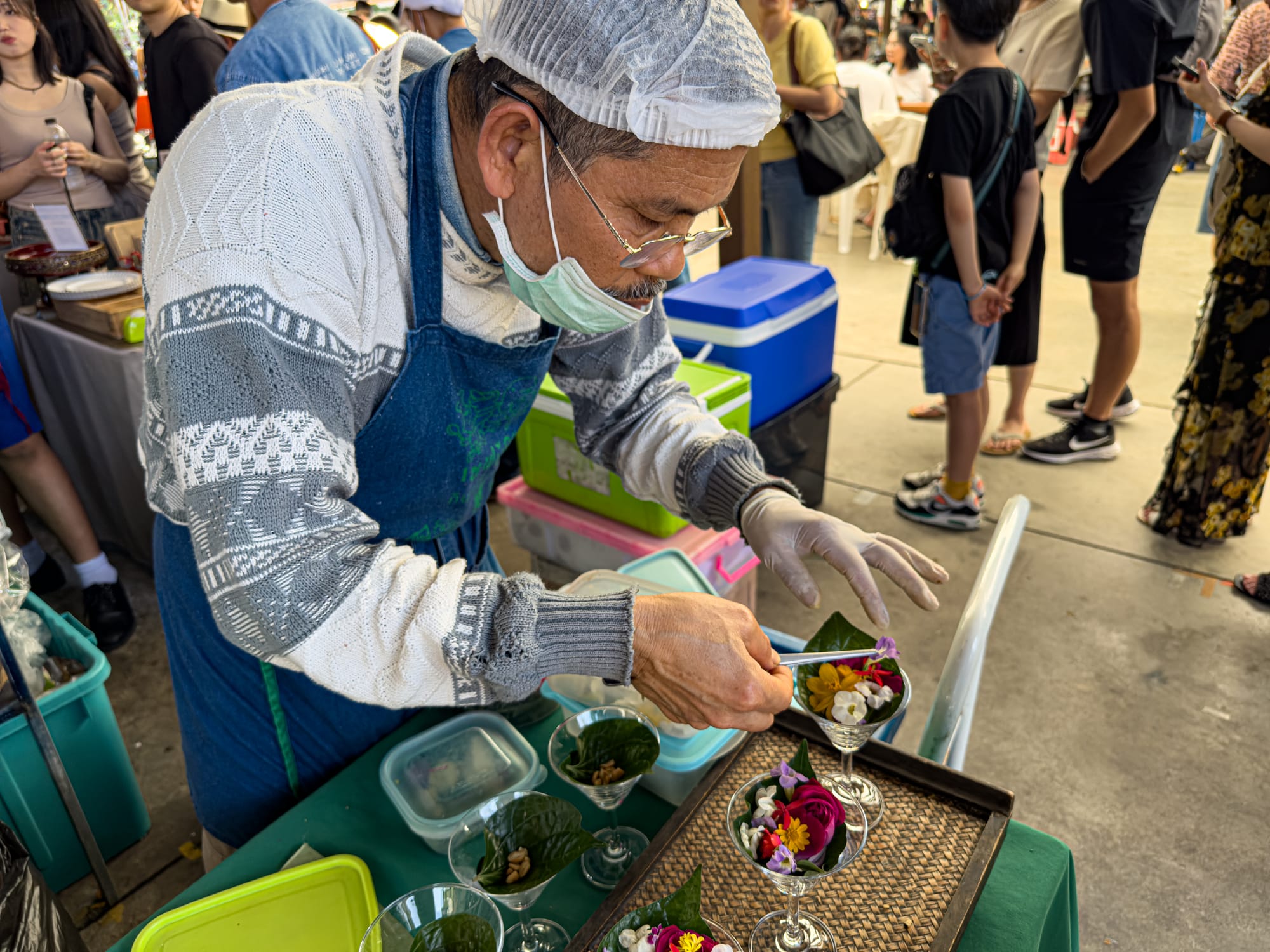
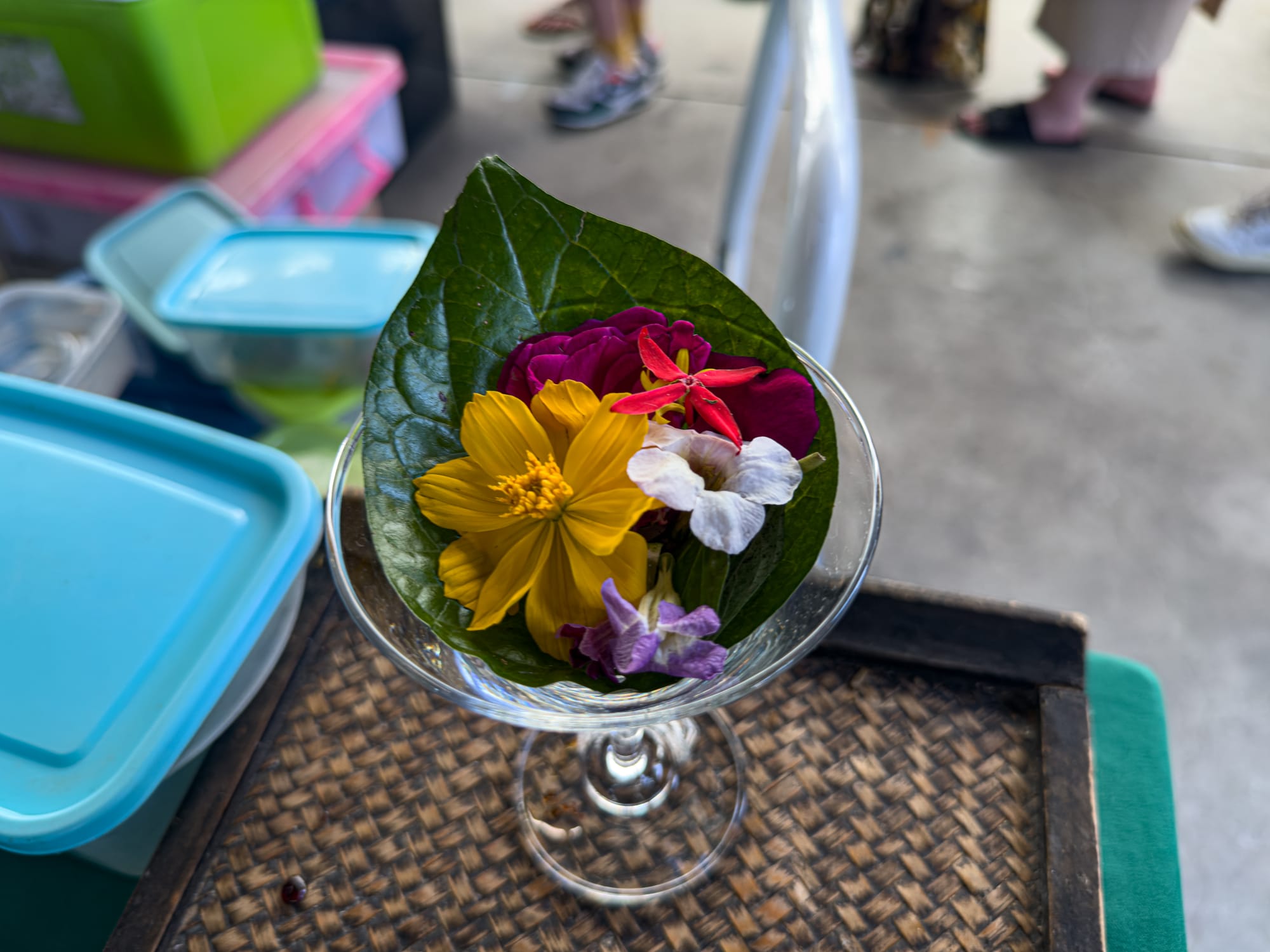
At Jing Jai Market, a vendor carefully arranges a vibrant mix of edible flowers into glass cups
The ordinary floral salad contains some meat, but the vendor was able to omit it so that we could have a vegan version.
The world of crafts
Beyond the food, Jing Jai Market offers an entire realm dedicated to crafts, design, and creativity. Walking through this section is like stepping into a gallery of handmade artistry. Stalls showcase hand-stitched textiles in bold, geometric patterns, pottery glazed in earthy tones, and delicate jewelry crafted from silver and semi-precious stones. Leather goods, notebooks made from recycled paper, and hand-painted wooden toys spill out across tables, each object reflecting the maker’s individuality and care.
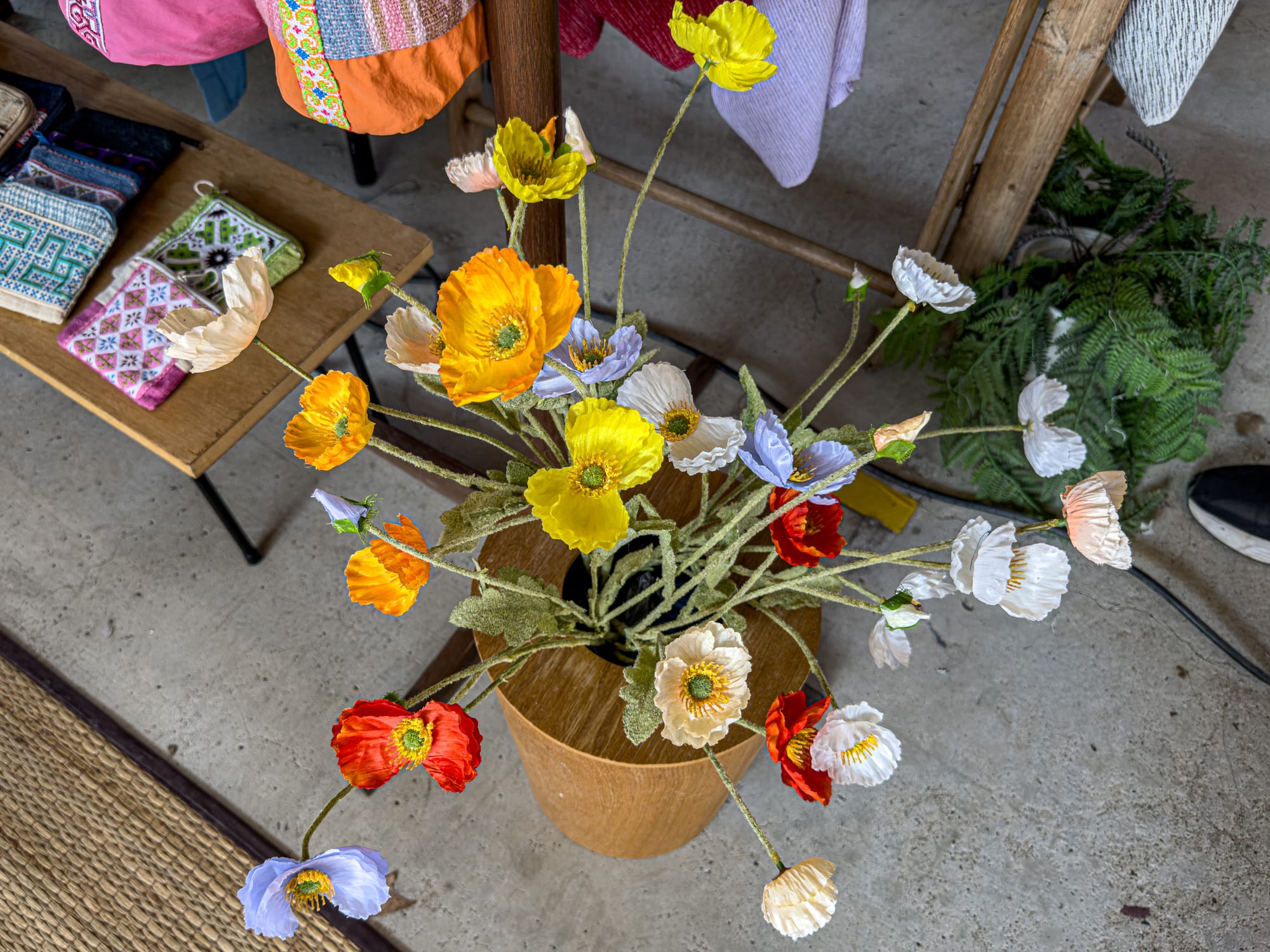
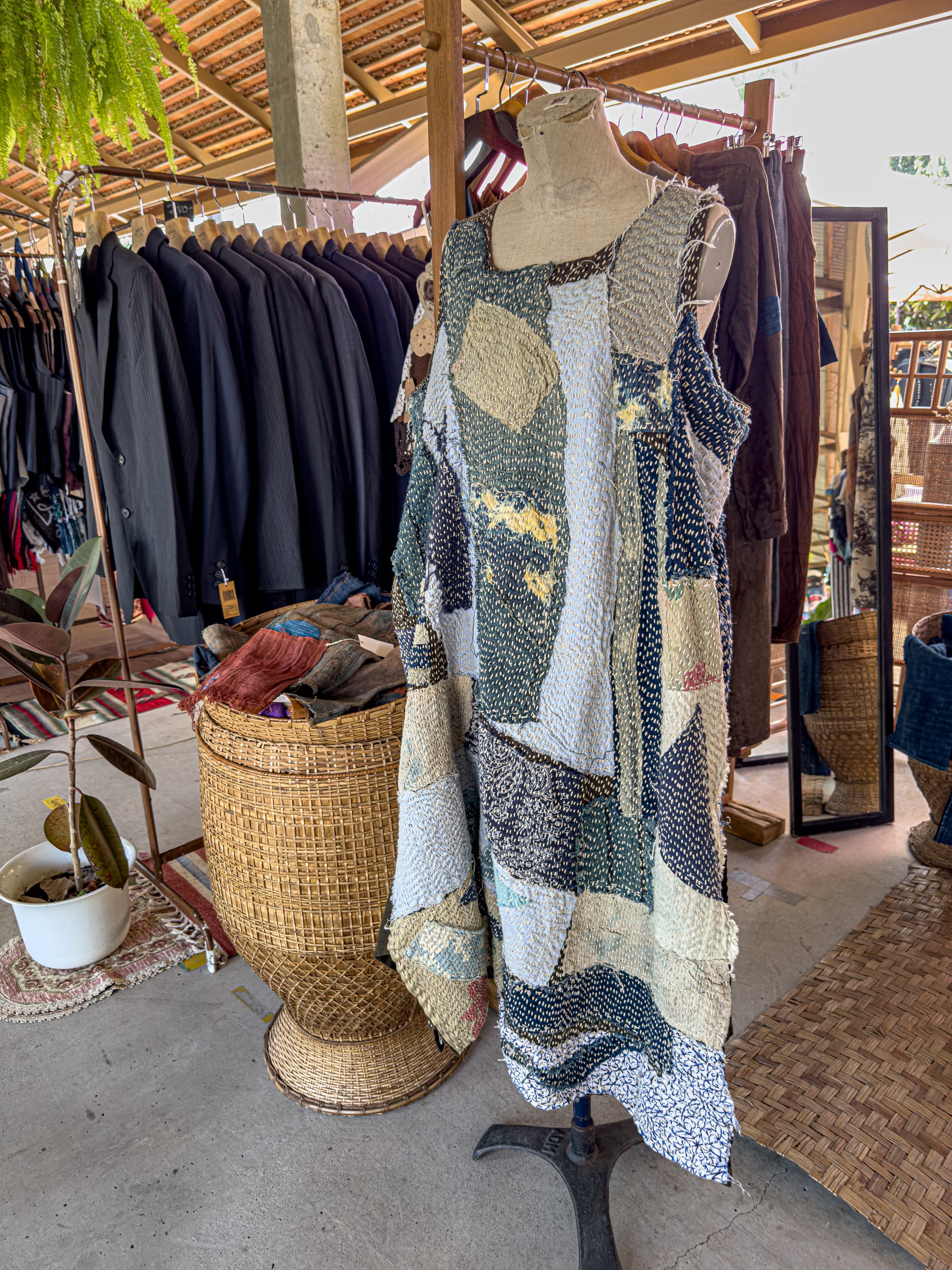
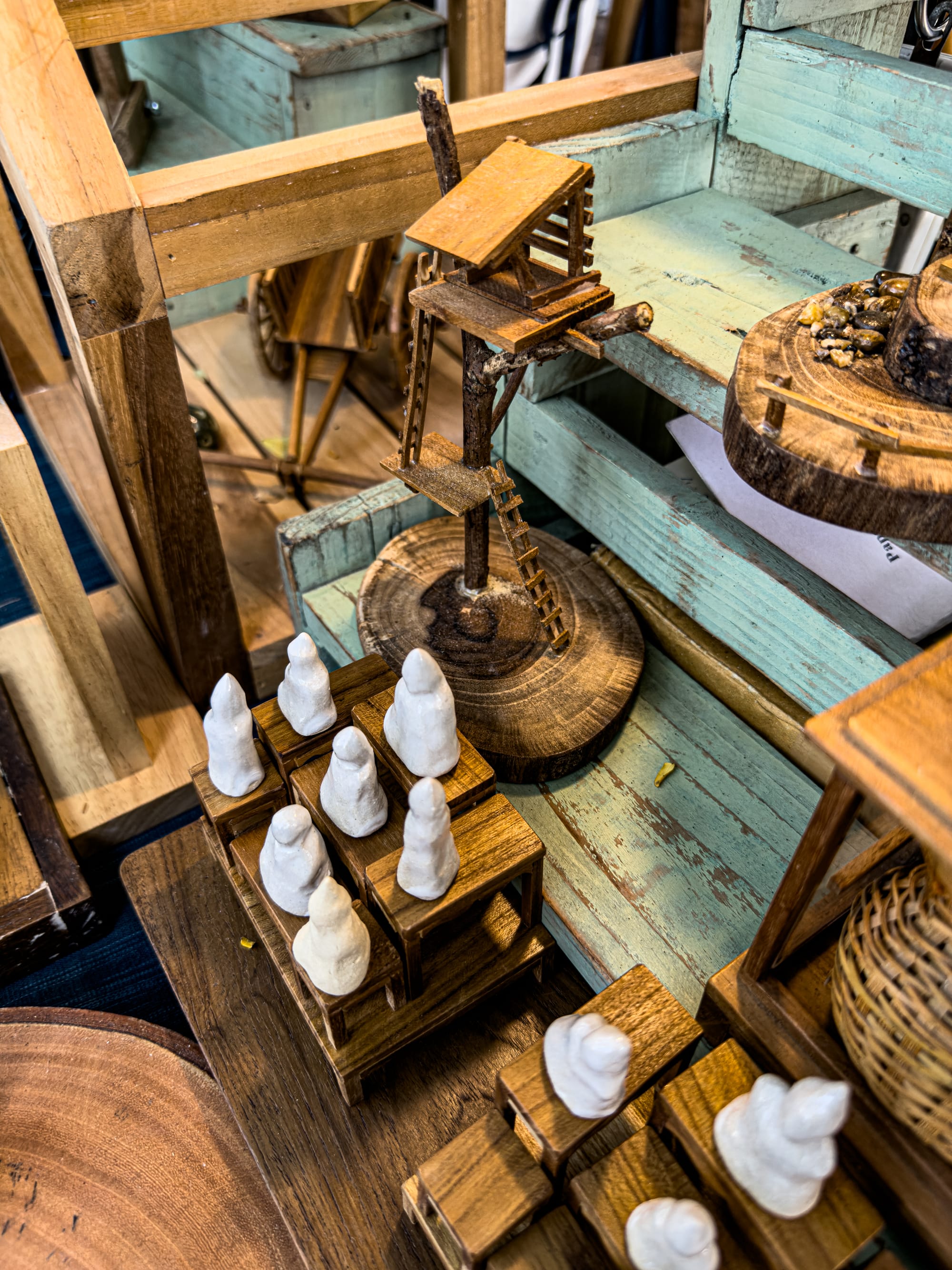
Handmade crafts and clothing for sale at Jing Jai Market in Chiang Mai
The atmosphere here is slower-paced, inviting visitors to linger and browse. The textures of the materials—the rough weave of hand-dyed fabric, the smooth coolness of ceramic bowls, the soft grain of carved wood—invite touch. Craftspeople are eager to share their stories, explaining techniques passed down through generations or describing how they’ve adapted traditional methods into contemporary designs. It is this blending of heritage and innovation that makes the craft section so captivating, a living expression of Chiang Mai’s evolving creative identity.
A living canvas of Chiang Mai’s spirit
To wander Jing Jai Market is to immerse yourself in a space where food, art, and community converge into something greater than the sum of its parts. Every detail—the fragrant herbs stacked high in bamboo baskets, the smoke rising from clay grills, the glimmer of handmade jewelry catching the sunlight—contributes to the sense that this market is alive, breathing with the energy of the people who shape it.
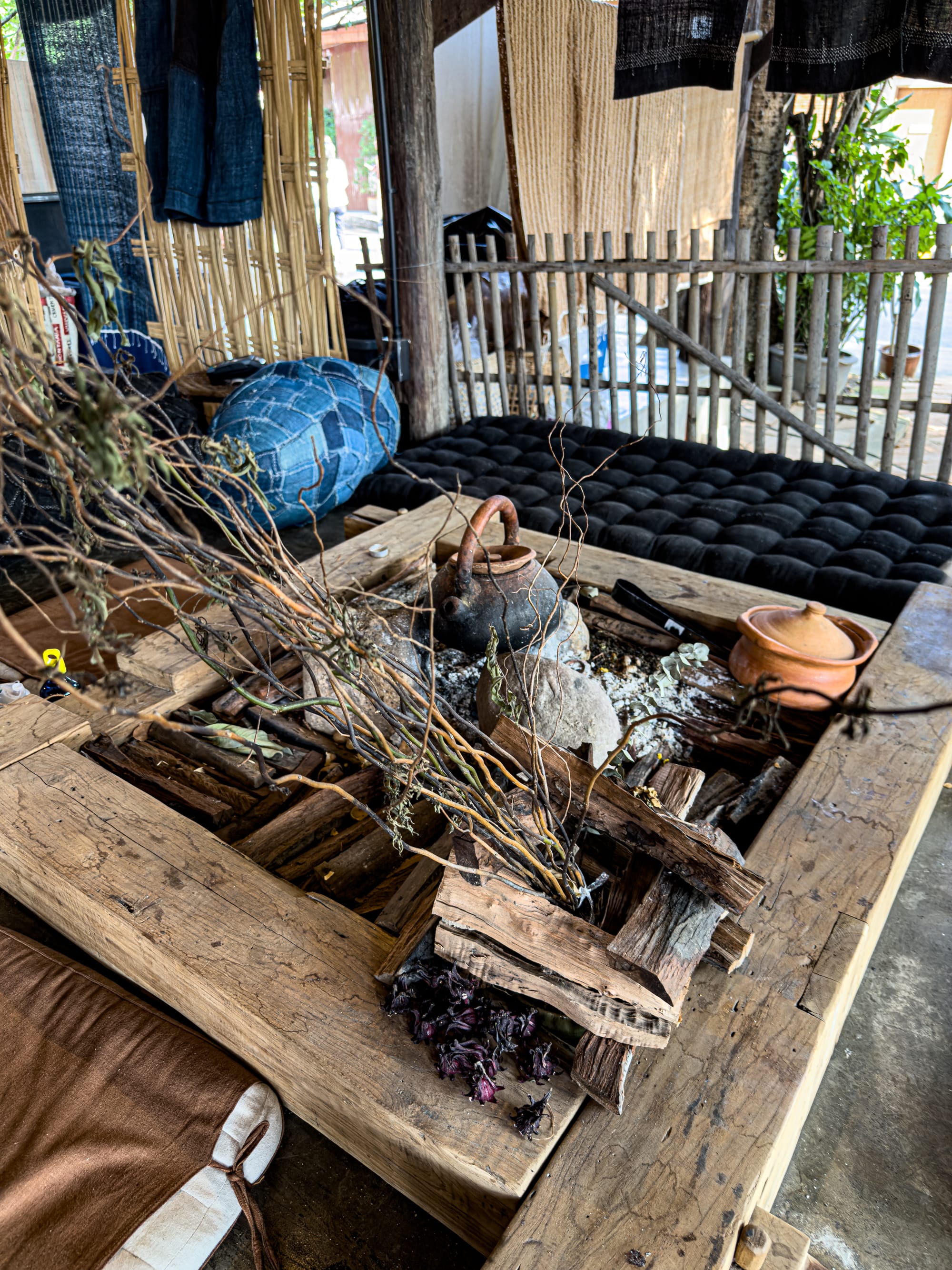
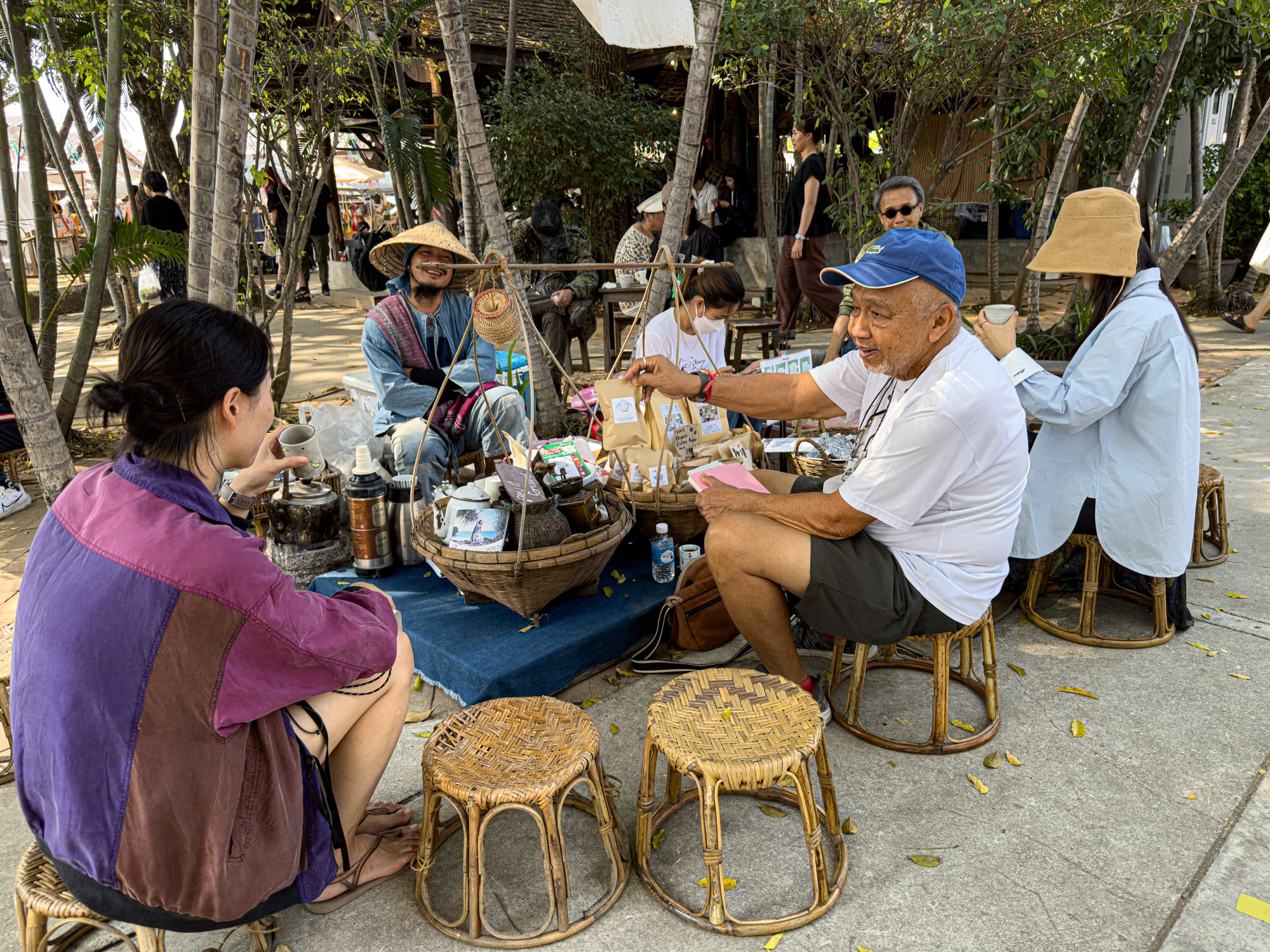
Traditional tea-making setup and a lively tea circle at Jing Jai Market in Chiang Mai
There is a rhythm here that feels both grounded and celebratory. Families gather to shop for their weekly vegetables, students linger at craft stalls, and groups of friends share snacks beneath colorful umbrellas. The market embodies a balance between tradition and modernity, honoring agricultural roots while celebrating contemporary creativity.
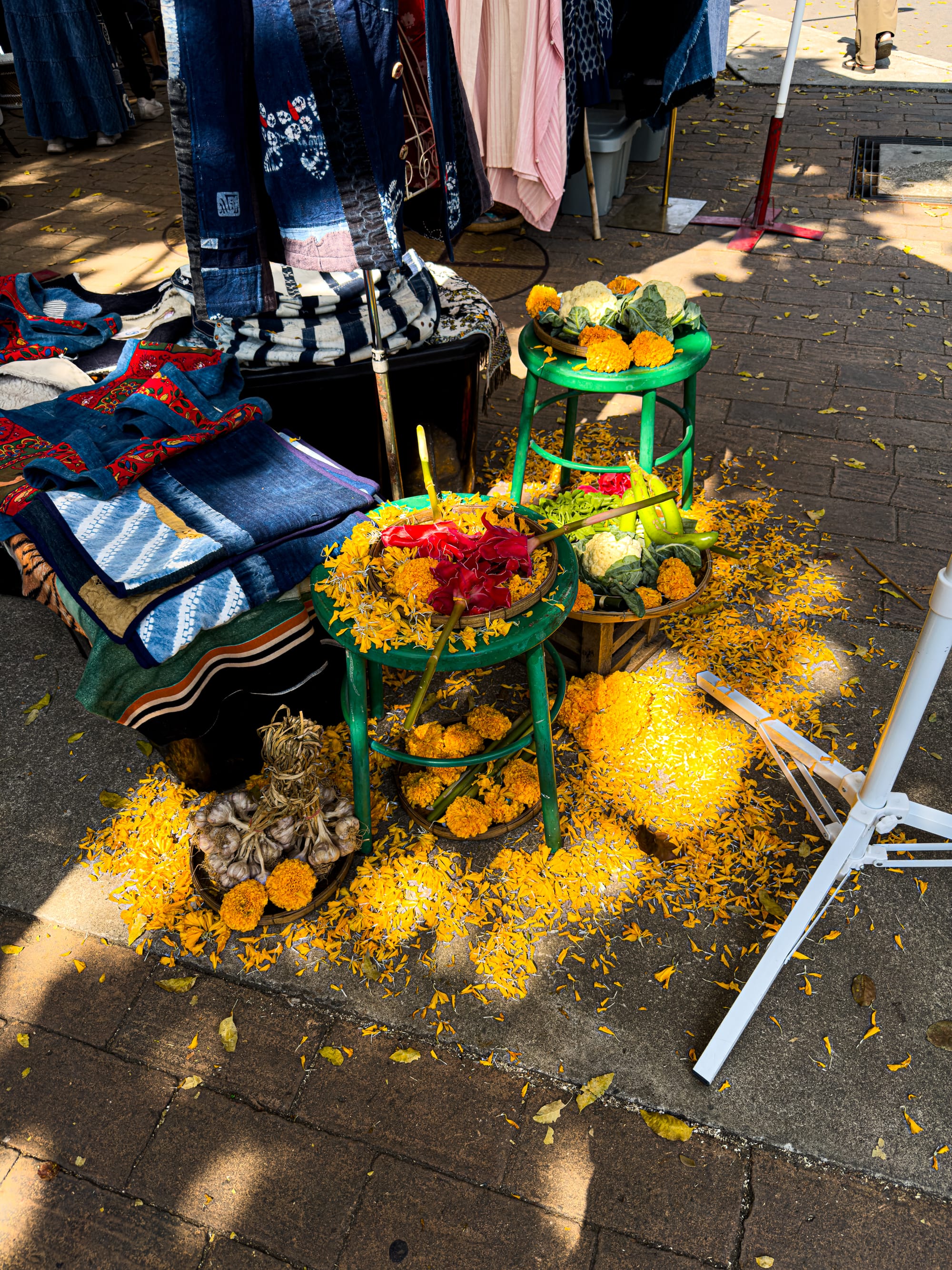
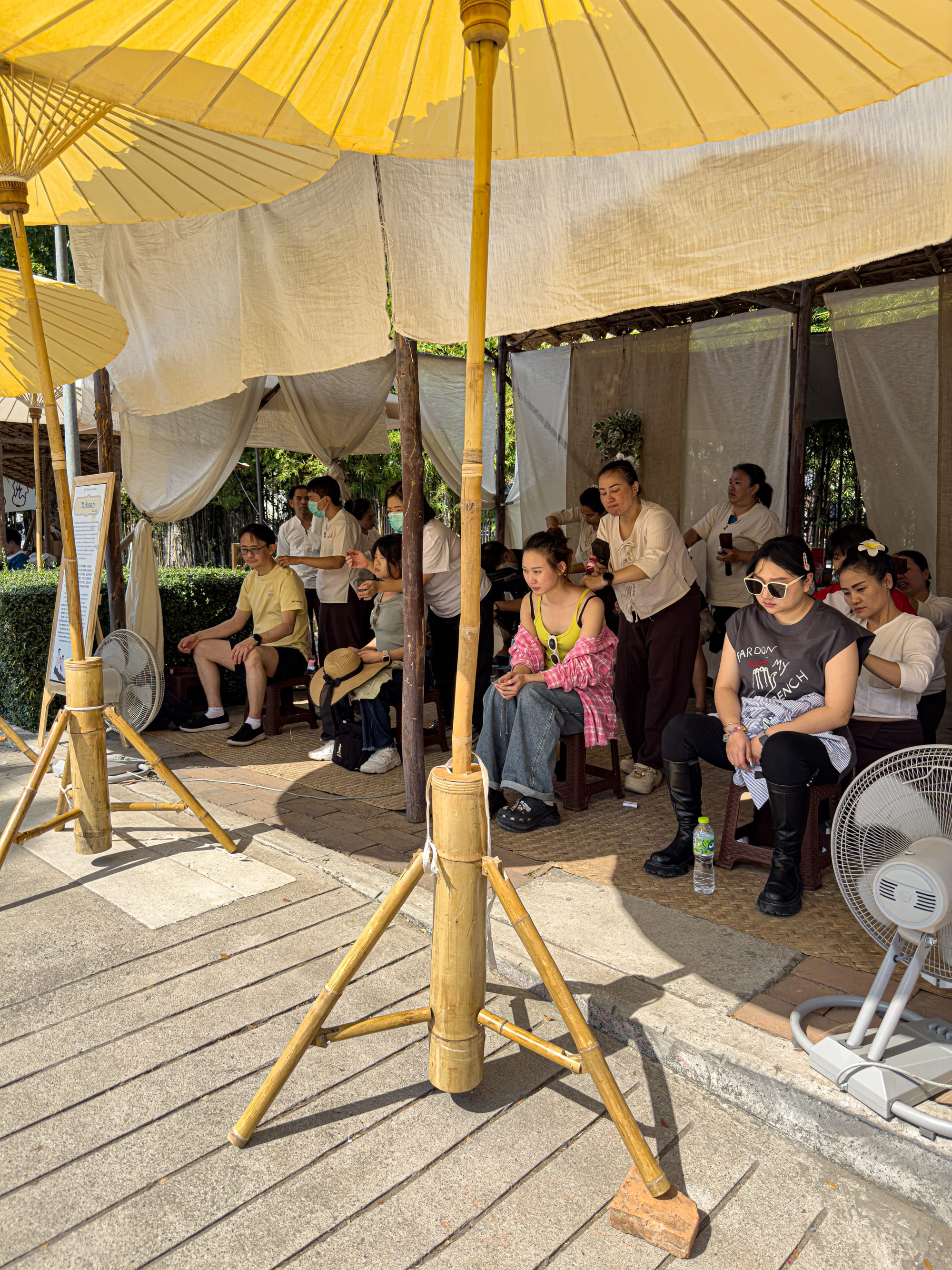
Fresh marigolds scattered around a vibrant stall and visitors getting Tok Sen massages at Jing Jai Market
More than just a place to shop or eat, Jing Jai Market is a living canvas of Chiang Mai’s spirit. It captures the textures, tastes, and rhythms of everyday life, inviting you not just to observe but to participate in a community that values sustainability, artistry, and connection.






